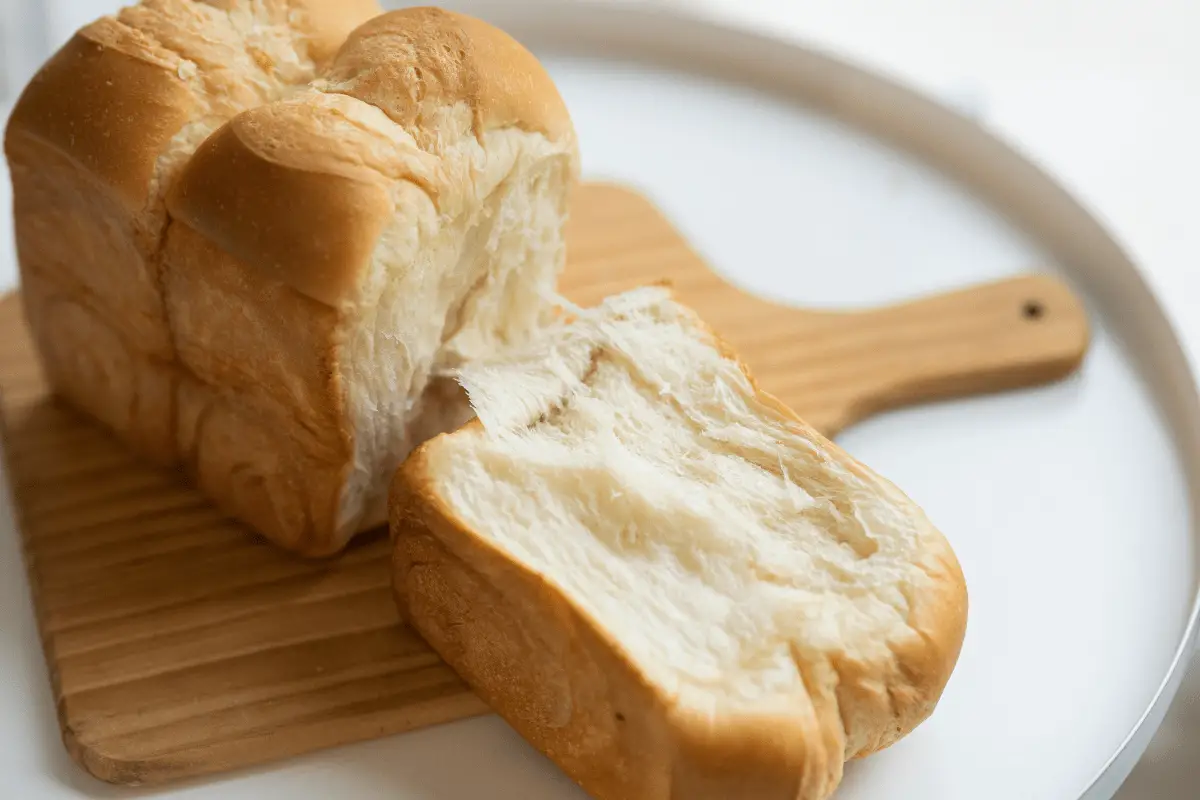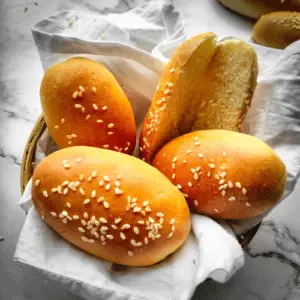Welcome back to your favorite baking and dessert blog!
Let’s talk about the magic of preferments in this blog “What is a preferment?” These pre-fermented flour, water, and yeast mixtures unlock incredible flavors and textures and even extend the shelf life of your baked products. Elevate your baking game with this essential technique that will leave your taste buds craving more!
Table of contents:
- Types of preferment
- Importance
- Equipment required
- Ingredients required
- Procedure
- FAQ
- Recommended recipes
There are links on this site that can be defined as affiliate links. As an Amazon Associate, I earn from qualifying purchases.
Types of Preferments:
Biga:
Originating from Italy, Biga is a stiff preferment with a higher ratio of flour to water. This means it has a thicker consistency compared to other preferments. Biga adds a deep and complex flavor it adds to your bread. It works its magic by enhancing the texture of the dough, resulting in a chewy and beautiful crust. To create Biga, all you need is flour, water, and a small amount of yeast. Remember, patience is key with Biga as it requires a longer fermentation time, but the results are well worth the wait. So, if you’re looking to elevate the strength and flavor of your bread, give Biga a try and enjoy the amazing results.
Poolish
Hailing from France, Poolish is a wet preferment with equal parts flour and water. Unlike Biga, Poolish has a looser consistency and a shorter fermentation time. Poolish is used to enhance the aroma and flavor of your bread. It contributes to a light, open crumb structure, creating a delightful texture. With its higher moisture content, Poolish creates an ideal environment for bacterial activity, aiding in fermentation and adding complexity to the bread. To create Poolish, simply combine flour, water, and a small amount of yeast.
Pâte Fermentée
Pâte Fermentée is the French word for ” fermented dough,” made by reserving a portion of fully risen bread dough. It acts as a natural preferment, adding depth of flavor and improving the qualities of future batches. Incorporating it into new dough provides a unique tang and complexity to the final product.
Sponge
The Sponge method involves creating a mixture of flour, water, and yeast that ferments for a specific time. It is then combined with additional ingredients to form the final dough. Sponges enhance the rise, flavor, and texture of bread, resulting in a more pronounced and well-developed crumb.
Levain:
Commonly referred to as a sourdough starter, it is an advancement made from naturally occurring yeast and flour. Levain is the French for leaven or sour.
It offers a distinctive tangy flavor and contributes to sourdough bread’s characteristic open-crumb structure.
The natural fermentation process of levain adds complexity and depth to your baked creations.
Importance of Using Preferments:
Flavor Enhancement:
When we make preferments, we create the perfect environment for yeast and bacteria to work their magic. As they consume the sugars in the flour and release carbon dioxide, they also produce flavorful byproducts. These byproducts, such as acids and alcohol, contribute to our bread’s rich and complex flavors. The longer the fermentation, the more time these flavors have to develop, resulting in a more nuanced taste.
Texture Improvement:
The fermentation process in preferments not only adds flavor but also improves the texture of our bread. During fermentation, the carbon dioxide gas produced by the yeast gets trapped in the dough, creating tiny air pockets. This gives the bread a light and airy structure, making it soft and elastic to the touch. The proteins in the flour also break down during fermentation, resulting in a more tender and moist crumb.
Extended Shelf Life:
One of the great benefits of using preferments is that they can help extend our bread’s freshness and shelf life. The acids produced during fermentation act as natural preservatives, inhibiting the growth of mold and keeping the bread fresher for a longer period. This means you can enjoy your homemade bread for more days without becoming stale or losing its delicious qualities.
What equipment do I need to make a preferment?
A set of teaspoons and tablespoons
This stainless steel measuring spoon set is perfect. I use the one that my pastry college provided to me. I did use the plastic ones, but let me tell you, they may look boring. But stainless steel is best for long-term and safe use.
Big Bowl
I use big bowl because it reflects the light when I shoot videos, and you also get to see all the ingredients. It can also be used in the microwave.
Weighing Scale
Not everything good is costly, weighing scale is perfect for all your recipes. I have been using this one for 6 years, and then it broke because I dropped it by mistake. You would think I bought one after that, but no. I decided to use a tape and kept using it for 6 more months until it finally gave up, and I had to buy another one.
Spatula
Trust me when I say you need silicon spatula. It’s the best thing ever! Nothing, I repeat, nothing can clean your bowl the way a spatula cleans it. Also, bonus points: it’s heat resistant, dishwasher safe, and has no cracks and crevices, so it’s easy to clean.
Balloon Whisk
This balloon whisk has a good grip and rounded tip for better whisking. I don’t use this because I already got balloon whisks when I got my toolkit from college, but this one’s a good whisk.
What ingredients do I need to make a preferment?
Flour:
Choosing the right flour is crucial for a successful preferment. Opt for high-quality flour, such as bread flour or all-purpose flour. These flours have a higher protein content, which provides strength and structure to your preferment. The gluten present in the flour contributes to fermentation and helps create a light and airy texture in your final baked goods.
Water:
The water you use should be at room temperature or slightly warm. It’s important to avoid using chlorinated or heavily treated water, as it can hinder the fermentation process. Water acts as a medium to hydrate the flour and activate the yeast, allowing fermentation to take place. It also helps create the ideal environment for microbial activity, contributing to the development of complex flavors.
Yeast or Starter:
The choice between yeast and a starter depends on the type of preferment you’re making. If you’re making a yeast preferment like a poolish or sponge, you’ll use a small amount of commercial yeast to kick-start the fermentation process. The yeast consumes the sugars in the flour and produces carbon dioxide, leading to the rise and flavor development of the preferment. On the other hand, if you’re making a sourdough preferment like a levain or sourdough starter, you’ll use a mature and active sourdough culture. The natural yeasts and bacteria present in the starter provide a distinctive tangy flavor and contribute to a more complex fermentation process.
How to make a preferment?
Making a preferment might sound fancy, but it’s pretty simple.
Step 1:
Measure your ingredients. You’ll need flour, water, yeast, or a sourdough starter, depending on the type of preferment you’re making.
Step 2:
Add water. Pour room temperature or slightly warm water into your flour. The water helps hydrate the flour and creates the perfect environment for fermentation.
Step 3:
Incorporate the yeast or starter. Sprinkle it over the flour and water mixture if you’re using commercial yeast. For a sourdough preferment, add a portion of your active sourdough starter.
Step 4:
Mix it up. Stir everything together until the flour is fully hydrated, forming a thick, sticky dough. You don’t need to knead vigorously; just ensure all the ingredients are well combined.
Step 5:
Cover and let it ferment. Place a clean cloth or plastic wrap over the preferment to keep it protected. Let it sit at room temperature for the specified fermentation time, allowing the flavors to develop and the dough to rise. The duration will depend on the type of preferment you’re making, so follow your recipe’s instructions.
Step 7:
Ready to use. Once your preferment has been fermented, don’t forget to smell that fermentation. Most will say “ew,” but it’s nature doing its work, and I admire it. Use it as directed in your recipe, incorporating it into your dough or batter to enhance flavor, texture, and overall baking goodness.
Please note that preferments can vary in types like biga, poolish, pâte fermentée, sponge, or levain. Each has unique characteristics and uses, so feel free to explore different preferments to discover your favorites.
Frequently Asked Questions about making preferment:
What is the purpose of making a preferment?
Preferments serve multiple purposes in baking. They enhance flavor, improve texture, and extend the shelf life of your baked goods.
How long should I let my preferment ferment?
The fermentation time will vary depending on the type of preferment you’re making. Generally, it can range from a few hours to overnight. Follow your recipe’s instructions for the best results.
Can I use instant yeast instead of a sourdough starter?
Absolutely! Instant yeast is an excellent option if you don’t have a sourdough starter or prefer a quicker fermentation process. Just adjust the amount of yeast accordingly, following your recipe’s guidelines.
Can I refrigerate my preferment?
Yes, you can refrigerate your preferment to slow down the fermentation process. This can be helpful if you want to extend the fermentation time or delay baking. Just be sure to let it come to room temperature before using it in your recipe.
Can I freeze my preferment for later use?
Freezing a preferment is possible, but it may affect the yeast activity. Using it within a few days of making it for the best results is generally recommended. If you do freeze it, thaw it in the refrigerator overnight and let it come to room temperature before using.
Can I use a preferment in any baking recipe?
Preferments are commonly used in bread recipes, but you can also experiment with incorporating them into baked goods like pizza dough, bagels, and pastry recipes. Be sure to adapt the recipe and consider the flavor profile you desire.
Can I adjust the hydration level of my preferment?
Yes, you can adjust the hydration level by adding more or less water to your preferment. Remember that different hydration levels will affect the texture and flavor of your final product.
Can I make a preferment gluten-free?
While traditional preferments are made with gluten-containing flours, you can explore gluten-free alternatives like a combination of gluten-free flours or a gluten-free sourdough starter.
Can I make a preferment without yeast?
Yes, you can make a naturally leavened preferment using a sourdough starter. This method relies on the wild yeast present in the starter to ferment the dough.
Can I store my preferment for a long time?
Preferments are best used within a specific time to maintain optimal flavor and texture. It’s recommended to use them within a day or two. If you need to store them longer, refrigerate or freeze them following proper guidelines.
Bread recipes that you may like to bake:
[ CLICK ON THE IMAGE FOR THE RECIPE]

MADE THIS RECIPE?
Tag @alishasdessertsafari on Instagram and hashtag it #alishasdessertsafari
Don’t forget to Subscribe to get exclusive well-curated value-packed mail twice every month that you wouldn’t want to miss out on!
Follow me on Instagram to get more BTS, baking tips, launches, and daily updates.
I hope you found my post “What is a preferment?” helpful. If you have any queries, feel free to post them in the comments below.
Thank You.






